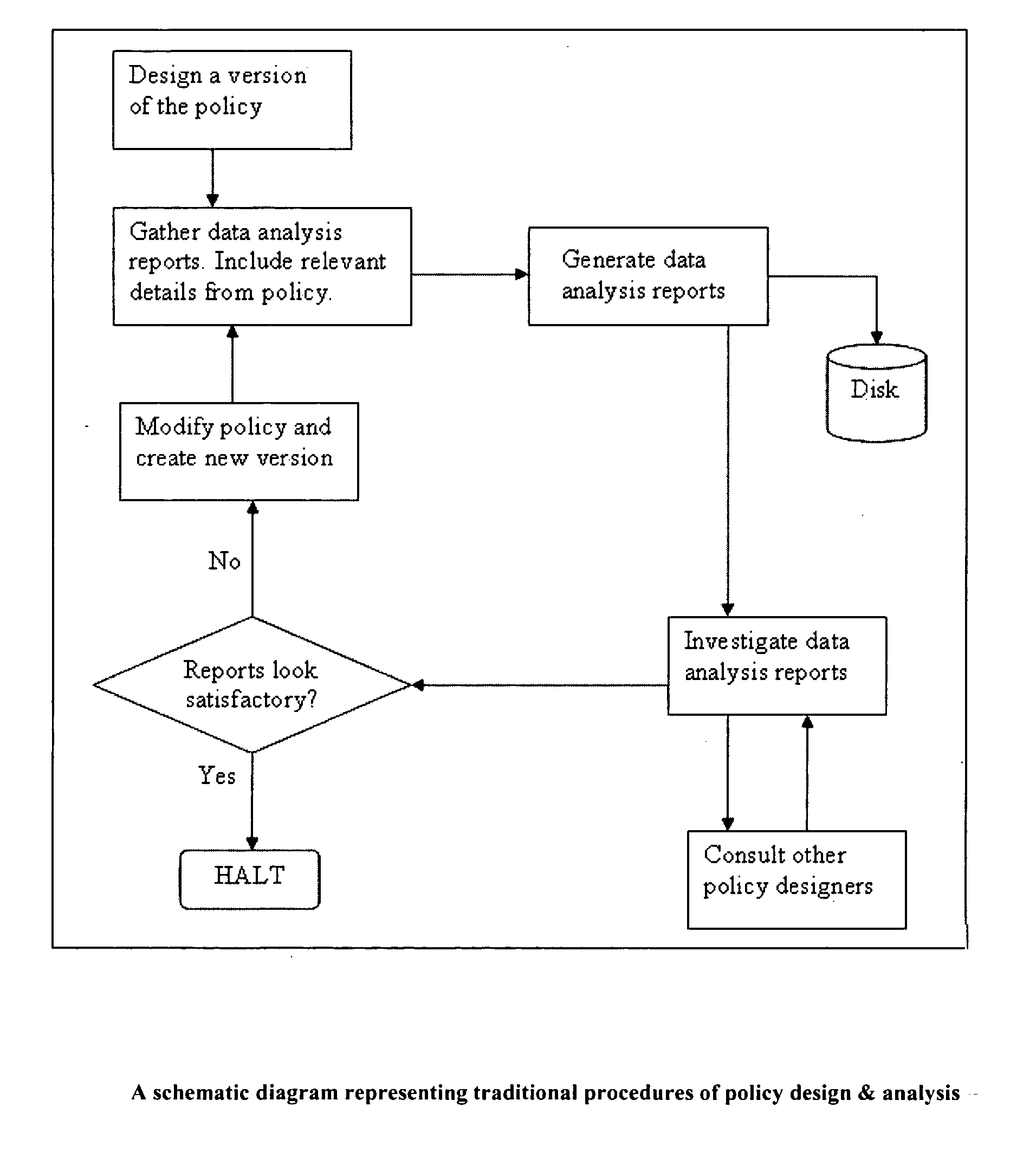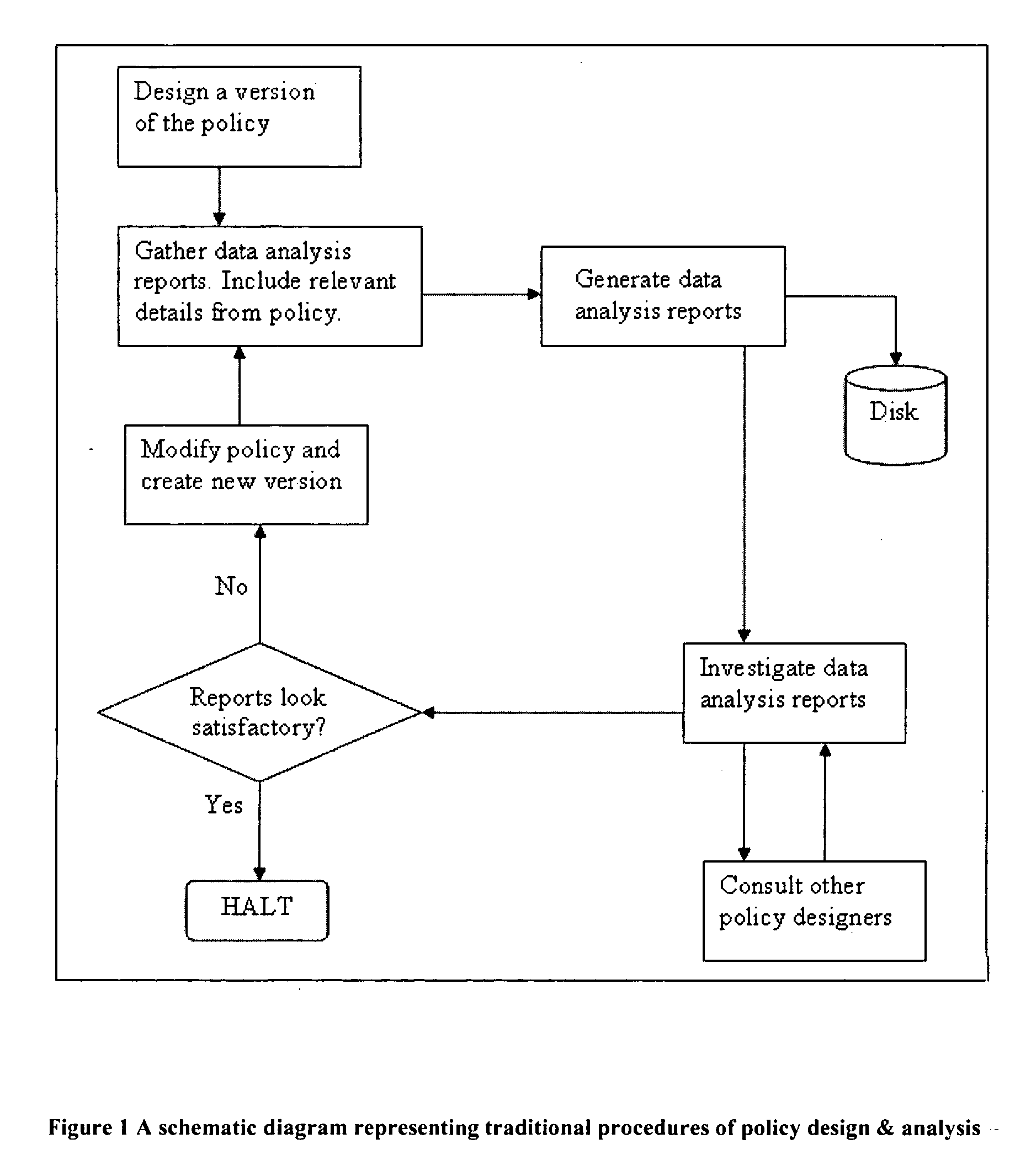System and method for designing effective business policies via business rules analysis
a business policy and business rule technology, applied in forecasting, instruments, data processing applications, etc., can solve the problems of significant time it takes for even a minor change, serious challenge and undermine the advantages of today's dynamic business environment, and use of software programs
- Summary
- Abstract
- Description
- Claims
- Application Information
AI Technical Summary
Benefits of technology
Problems solved by technology
Method used
Image
Examples
Embodiment Construction
[0088] We now proceed with a detailed description of the preferred embodiments of the invention. We begin with a discussion about preliminary concepts and terminology which will be used in the remainder of the discussion.
[0089] 1. Preliminary Concepts and Terminology
[0090] We now elaborate upon some preliminary concepts and terminology used in the remainder of the document.
[0091] a. Business Rules, Decision Tables and Rulesets
[0092] A business rule is typically specified as logical rule, such as one or more If-Then clauses or similar logical operations, operating on business terms and may be as simple as the ones listed above for processing a new loan application. It is the basic unit of analysis in the methods and systems described herein. Decision tables are a compact way of representing several business rules in a tabular, spreadsheet-like format. A decision table can also be replaced by a set of business rules. However, the tabular format of the decision tables presents a cl...
PUM
 Login to View More
Login to View More Abstract
Description
Claims
Application Information
 Login to View More
Login to View More - R&D
- Intellectual Property
- Life Sciences
- Materials
- Tech Scout
- Unparalleled Data Quality
- Higher Quality Content
- 60% Fewer Hallucinations
Browse by: Latest US Patents, China's latest patents, Technical Efficacy Thesaurus, Application Domain, Technology Topic, Popular Technical Reports.
© 2025 PatSnap. All rights reserved.Legal|Privacy policy|Modern Slavery Act Transparency Statement|Sitemap|About US| Contact US: help@patsnap.com



